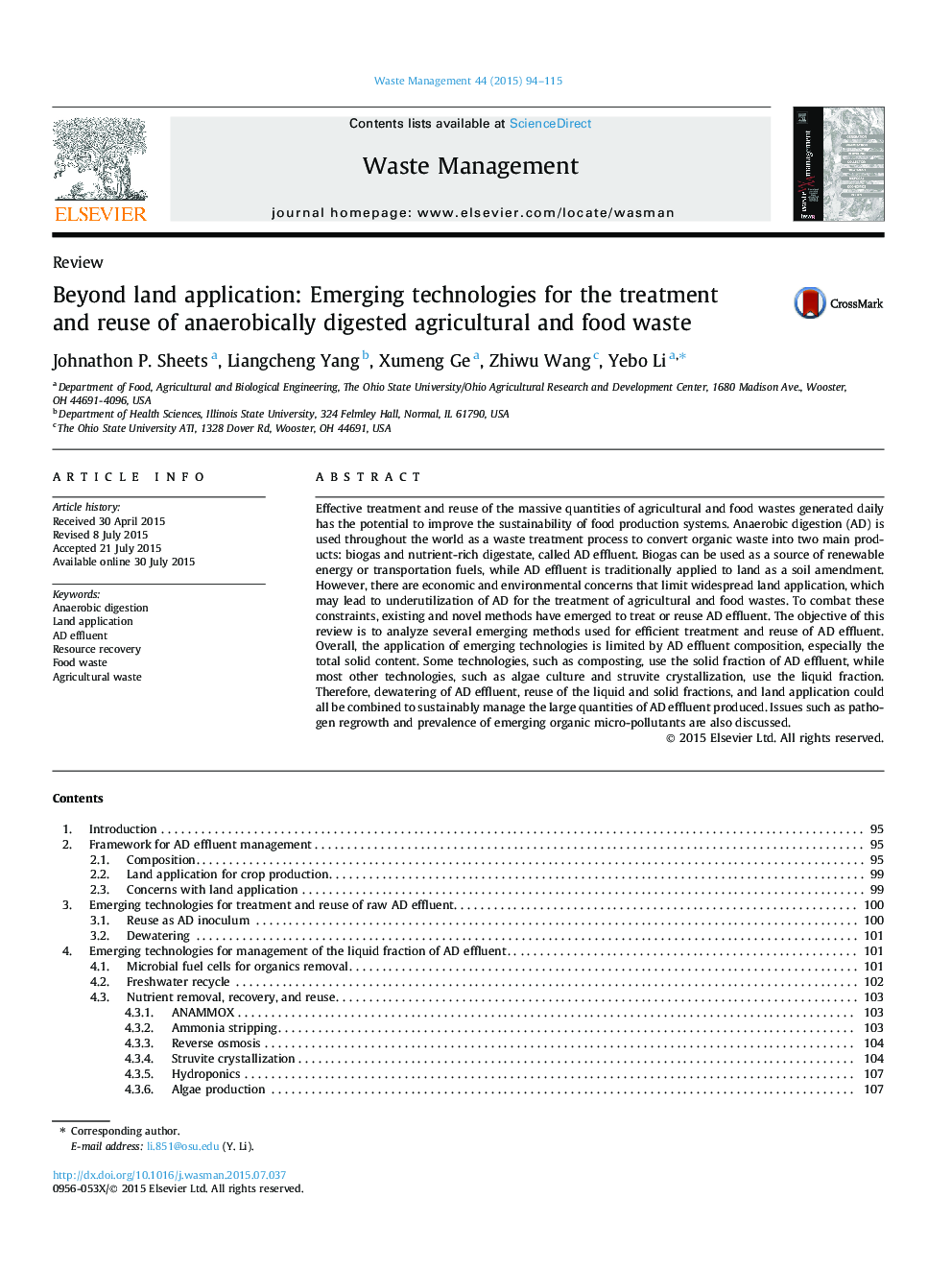| کد مقاله | کد نشریه | سال انتشار | مقاله انگلیسی | نسخه تمام متن |
|---|---|---|---|---|
| 4471361 | 1622641 | 2015 | 22 صفحه PDF | دانلود رایگان |
• A review on emerging technologies for treatment of anaerobic digestion effluent.
• Methods for reuse of organics, water, and nutrients in digested waste are discussed.
• Advantages, disadvantages, and opportunities for emerging technologies are provided.
• Perspectives on land application of anaerobic digestion effluent are reported.
Effective treatment and reuse of the massive quantities of agricultural and food wastes generated daily has the potential to improve the sustainability of food production systems. Anaerobic digestion (AD) is used throughout the world as a waste treatment process to convert organic waste into two main products: biogas and nutrient-rich digestate, called AD effluent. Biogas can be used as a source of renewable energy or transportation fuels, while AD effluent is traditionally applied to land as a soil amendment. However, there are economic and environmental concerns that limit widespread land application, which may lead to underutilization of AD for the treatment of agricultural and food wastes. To combat these constraints, existing and novel methods have emerged to treat or reuse AD effluent. The objective of this review is to analyze several emerging methods used for efficient treatment and reuse of AD effluent. Overall, the application of emerging technologies is limited by AD effluent composition, especially the total solid content. Some technologies, such as composting, use the solid fraction of AD effluent, while most other technologies, such as algae culture and struvite crystallization, use the liquid fraction. Therefore, dewatering of AD effluent, reuse of the liquid and solid fractions, and land application could all be combined to sustainably manage the large quantities of AD effluent produced. Issues such as pathogen regrowth and prevalence of emerging organic micro-pollutants are also discussed.
Journal: Waste Management - Volume 44, October 2015, Pages 94–115
